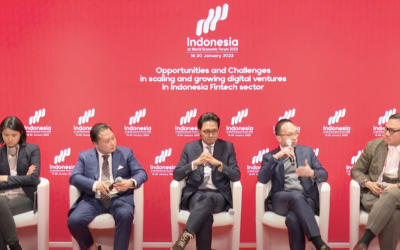Not everyone comprehends the depths of SMEs or UKM (or Usaha Kecil Menengah in Indonesian language). SME stands for Small and Medium Enterprises, an abbreviation that not everyone is well-versed with. SMEs constitute an essential business category that significantly contributes to the economy of society. Below is a comprehensive explanation of the concept of small and medium enterprises.
Also read: 8 Key Differences Between Startups and MSMEs You Need to Know
What is an SME?

What is SME or UKM
As mentioned earlier, SME stands for Small and Medium Enterprises. From this term alone, it can be deduced that an SME is a business operating on a small to medium scale. The term “small business” pertains to an enterprise established independently, with a specific turnover, and without assistance from major corporations. This implies that SMEs are not subsidiaries, branch companies, or components of larger enterprises with extensive main offices on a grand scale.
SMEs are governed by Undang-undang Nomor 20 Tahun 2008 (Law Number 20 of the Year 2008). According to this regulation on Micro, Small, and Medium Enterprises, a business qualifies as a small business if its annual turnover falls within the range of 300 million to 2.5 billion rupiah, and it employs a workforce of 30 to 100 individuals.
On the other hand, medium-sized businesses are those generating a turnover of 2.5 billion to 50 billion rupiah per year. There is a significant distinction between these two categories compared to micro-businesses, which only yield an annual turnover of under 300 million rupiah.
Similar to MSMEs (Micro, Small, and Medium Enterprises), the objective of Small and Medium Enterprises is to enable entrepreneurs to expand their ventures, thus contributing to the national economy based on principles of economic fairness.
Also read: 15 Advantages and Benefits of Being an Entrepreneur
Criteria for Small and Medium Enterprises
After comprehending the concept of an SME, it’s time to delve into the criteria. Besides the turnover aspect mentioned previously, Small and Medium Enterprises are subject to other criteria. The criteria for SMEs are established and regulated by UU No. 9 Tahun 1995 (Law Number 9 of the Year 1995). According to this law, the criteria for SMEs are as follows:
- – Maximum annual sales revenue: IDR 1 billion.
- – Maximum net worth: IDR 200 million (excluding land and buildings used as business premises).
- – Not affiliated as a subsidiary or branch of a Medium or Large Enterprise, either directly or indirectly.
- – The business can be in the form of an individual enterprise, an unincorporated business entity, or an incorporated business entity, including cooperatives.
- – Ownership by Indonesian citizens.
Also read: What is Affiliate Business: Its Strengths and Weaknesses
If an SME generates a turnover ranging from IDR 300 million to IDR 4 billion per year, the government imposes taxes, which are channeled into infrastructure projects. The SME is obligated to pay a 1% income tax. Regulations concerning tax collection are stipulated in PP Nomor 46 Tahun 2013 (Government Regulation Number 46 of the Year 2013).
Additional criteria for identifying an SME include having capital for machinery and equipment of IDR 70 million or less, as well as a capital/labor investment risk of IDR 625,000 or below. SME entrepreneurs are typically engaged in a variety of industries, including traditional crafts and modern sectors.
Also read: 13 Bad Characteristics Entrepreneurs Should Avoid
Distinguishing SMEs from MSMEs

What is SME or UKM
SMEs and MSMEs are distinct entities, often mistakenly assumed to be interchangeable. However, there are clear distinctions between the two as defined by regulations. The following are key differentiators between SMEs and MSMEs.
Micro Business:
- – Maximum annual sales revenue: IDR 300 million.
- – Maximum net worth: IDR 50 million (excluding land or buildings used as business premises).
- – These businesses are supported by districts and cities and don’t necessitate a legal entity.
Small Business:
- – Annual sales revenue: IDR 300 million to IDR 2.5 billion.
- – Net worth: IDR 50 million to IDR 500 million (excluding land and buildings used as business premises).
- – Legal entity required, overseen by the province.
Medium Business:
- – Annual sales revenue: IDR 2.5 billion to IDR 50 billion.
- – Net worth: More than IDR 500 million to IDR 10 billion (excluding land and buildings used as business premises).
- – Directly fostered by the central government and must possess a legal entity.
Also read: 13 Factors that Contribute to Entrepreneurial Success
Tips for SME Business Development
SMEs hold significant potential to dominate the market. There are numerous strategies to ensure the success of an SME business. Business owners must possess the acumen to identify opportunities. Success is attainable through diligence, perseverance in facing challenges, and a keen eye for identifying potential markets to conquer.
Also read: 7 Types of Market Segmentation in Business and Their Examples
This concludes the comprehensive explanation of what SMEs represent. SMEs hold immense importance in the country, playing a crucial role in boosting the Indonesian economy. A proliferation of SMEs in society leads to the presentation of numerous solutions, including employment opportunities. Are you prepared to embark on building an SME?



